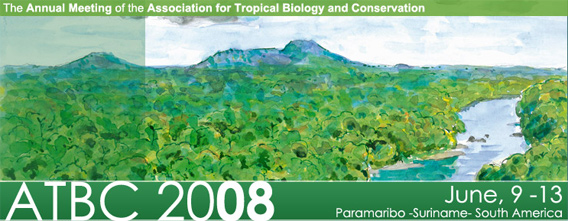Conservationists need to work with, not against, rural poor
An Interview with Marie-Louise Felix of WWF Guianas:
Conservationists need to work with, not against, rural poor
mongabay.com
October 25, 2007
|
|
Rural populations have long been demonized by conservationists, but this is changing. Increasingly, conservation groups see that without the support of rural populations, protected areas can in places be little more than ineffective “paper parks”. As such, today community involvement is viewed as a critical part of any conservation program, whether it be protecting biodiversity, slowing deforestation, curtailing illegal logging and poaching, or establishing reserves.
In the Guianas region of South America — an area characterized by some of the highest rates of forest cover on Earth — Marie-Louise Felix of WWF is working at this intersection of development and conservation. Balancing the two, while working in culturally diverse communities, is a challenge but Marie-Louise sees hope that local empowerment can produce ingenious solutions to complex problems — both environmental and social. Marie-Louise believes that while pressures from logging and mining are growing, safeguarding the local resources are in the long-term economic interests of many forest communities in the Guianas.
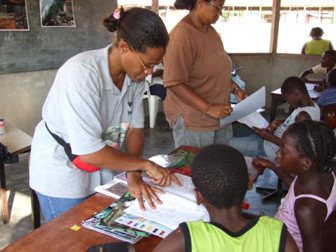
Marie-Louise Felix working with children in Suriname. |
To bolster international awareness of her efforts, Marie-Louise is helping organize the June 2008 Association for Tropical Biology and Conservation meeting in Paramaribo, Suriname. The Association for Tropical Biology and Conservation is the world’s largest scientific organization devoted to the study and wise use of tropical ecosystems.
Felix discussed her work in an October 2008 interview with mongabay.com.
An Interview with Marie-Louise Felix, Species Conservation of WWF Guianas
Mongabay: What is the focus of your research?
Marie-Louise Felix:
Community-based co-management models. Empowering forest communities to manage their environment.
Mongabay: How did you become interested in conservation?
Marie-Louise Felix: I have always been concerned about the scientist’s and conservation manager’s capacity to “save the planet” all by him or her self. We simply cannot do it. That means that we need to get more persons on board to assist in conservation. But then, can we pay all those persons? So we need many persons on board who are willing to work for benefits other than financial. Involving local persons to manage the nature “at home” is thus to me the most plausible solution. I also found that when you give people the chance to manage their own resources, some very ingenious results occur – if we do it right! So, for several years now, I have tried to find the “right model” to achieve participatory management of natural resources. It has been a challenge many times, but also a great learning experience flavored with allot of fun!
Mongabay: What are the biggest threats to the Guianas region?
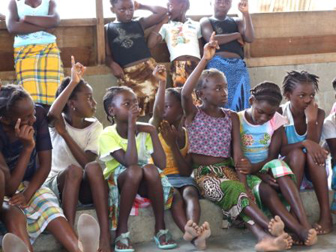
Children in Suriname. |
Marie-Louise Felix: Slowly changing lifestyles, so that people have increased their rate of exploitation (so that there is more hunting, harvesting for the local and international markets, more mining. We also see the introduction of new goods and services that bring with them waste of all types. In Suriname and Guyana, the wildlife is threatened by either over-exploitation or habitat change. Habitats are being altered to facilitate developmental goals.
Mongabay: What is your long-term outlook for the Guianas?
Marie-Louise Felix: I think that in the Guianas, wildlife has great opportunity not only to survive but also to flourish. At the same time I think that the rate of ecosystem change will continue to slowly increase, likewise impacts of development. These rates of change can be slowed down through careful planning and some willingness to forfeit certain conveniences and comforts. We need to place limits on ourselves, and give priority to resources that can contribute tremendously to our long term well being. We must let forests be wild and in many cases inhabitable.
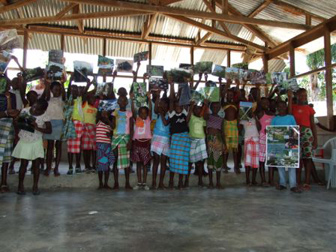
Children in Suriname. |
Mongabay: Do you expect climate change to impact the Guianas?
Marie-Louise Felix: Unfortunately yes. The Amazon’s beauty lies in its rich tropical forests. Changing temperatures and humidity will ultimately impact on biodiversity. However, the severity of this impact can be reduced if action is taken now to manage the development processes.
Mongabay: What’s the best way to protect tropical ecosystems and conserve biodiversity?
Marie-Louise Felix: Embrace development processes (such as eco-tourism) that have minimum impact on the local environment. Establish special reserves for endangered wildlife, safeguard unique landscapes that have the capacity to host a wide range of biodiversity, and reduce waste production.
Mongabay: What can the general public do to help?
Marie-Louise Felix: Reduce waste, reduce species exploitation, and preserve as much forest landscape as possible.
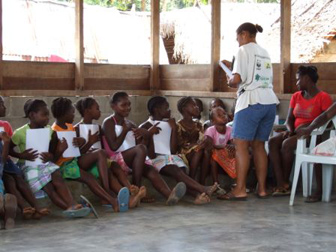
Marie-Louise Felix working with children in Suriname. |
Mongabay: Do you have any advice for aspiring conservation scientists (students)?
Marie-Louise Felix: Do not be afraid to try new things and new approaches. Do not underestimate the capacity of small events to impact biodiversity in a big way. Finally, do not give up when efforts seem to bear little fruit.
Mongabay: What is you favorite place in the tropics?
Marie-Louise Felix: Any where on an isolated river, near rushing water. Sitting on large rocks and listening to the voice of the planet!
More articles on conservation in the Guianas
Rainforest tribe establishes massive sustainable-use reserve
(10/4/2007) An indigenous group in Guyana has established one of the world’s largest sustainable forest reserves, reports Conservation International.
Low deforestation countries to see least benefit from carbon trading
(8/13/2007) Countries that have done the best job protecting their tropical forests stand to gain the least from proposed incentives to combat global warming through carbon offsets, warns a new study published in Tuesday in the journal Public Library of Science Biology (PLoS). The authors say that “high forest cover with low rates of deforestation” (HFLD) nations “could become the most vulnerable targets for deforestation if the Kyoto Protocol and upcoming negotiations on carbon trading fail to include intact standing forest.”
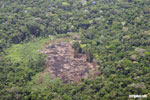 |
Amazon rainforest fires date back thousands of years
(3/14/2007) Fires are nothing new to the Amazon reports a study published in the journalBiotropica. Analyzing soils in the eastern Amazon, a team of scientists led by David S. Hammond of NWFS Consulting, has found evidence of forest fires dating back thousands of years. While the origin of these fires is unclear, the authors propose intriguing scenarios involving pre-Colombian human populations and ancient el Nino events which could have so dried rainforest areas that they became more prone to forest fires.
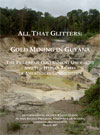 |
Gold mining in Guyana damages environment, threatens Amerindians
(3/6/2007) Informal gold mining is causing environmental harm and human rights abuses in Guyana says a new report from the International Human Rights Clinic (IHRC) of Harvard Law School’s Human Rights Program. Wildcat gold mining has been a serious problem in the Guiana shield countries of Brazil, Venezuela, Guyana, Suriname and French Guiana. Rising gold prices in recent years have only worsened the problem, as illegal miners have flooded the region clearing forest, polluting rivers, and making threats against indigenous people.
New park in French Guiana creates largest Amazon protected area
(2/28/2007) Environmental group WWF has applauded the creation of a new national park in French Guiana, a department of France located in northeaster South America. WWF says the 2 million-hectare Guyana Amazonian Park will link to protected areas in neighboring Brazil, including the Tumucumaque National Park, Grao-Para Station and Maicuru Reserve. In total, the protected areas network will encompass 12 million hectares of tropical forest, making it the world’s largest rainforest park.
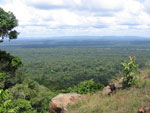 |
Biofuels, logging may spur deforestation in Guyana
(2/15/2007) Growing timber exports and rising interest in biofuels are raising concerns that deforestation could accelerate in the South American country of Guyana. Guyana is a small, lightly populated country on the north coast of South America. About three-quarters of Guyana is forested, roughly 60 percent of which is classified as primary forest. Guyana’s forests are highly diverse: the country has some 1,263 known species of amphibians, birds, mammals, and reptiles, and 6,409 species of plants.
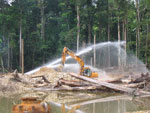 |
Europe’s largest tropical rainforest invaded by gold miners
(12/19/2006) As Europe frets over climate change and deforestation, threats to “Europe’s largest tropical rainforest” are mounting, according to reports from French Guiana. While French Guiana is best known for its infamous Devil’s Island penal colony and as the main launch site for the European Space Agency, which is responsible for more than 50% of the state’s economy activity, most of the territory is covered with lowland tropical rainforest. French Guiana’s forests are biologically rich with some 1,064 known species of amphibians, birds, mammals and reptiles, and 5,625 species of vascular plants according to figures from the World Conservation Monitoring Center.
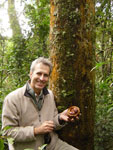 |
Time is running out for French Guiana’s rainforests
(12/19/2006) Understanding relationships between plants and animals is key to understanding rainforest ecology. Dr. Pierre-Michel Forget of the Museum National d’Histoire Naturelle in France is a renowned expert on the interdependency between rainforest trees and seed disperses. Author of dozens of papers on tropical forest ecology, Dr Forget is increasingly concerned about deforestation and biodiversity loss in forests of the Guiana Shield region of Northern South America. In particular he sees the invasion of informal gold miners, known as garimpeiros, as a significant threat to forests in French Guiana, Suriname, Guyana and Venezuela.
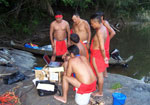 |
Amazon Indians use Google Earth, GPS to protect forest home
(11/14/2006) Deep in the most remote jungles of South America, Amazon Indians are using Google Earth, Global Positioning System (GPS) mapping, and other technologies to protect their fast-dwindling home. Tribes in Suriname, Brazil, and Colombia are combining their traditional knowledge of the rainforest with Western technology to conserve forests and maintain ties to their history and cultural traditions, which include profound knowledge of the forest ecosystem and medicinal plants. Helping them is the Amazon Conservation Team (ACT), a nonprofit organization working with indigenous people to conserve biodiversity, health, and culture in South American rainforests.
Carbon finance could net Guyana and Suriname tens of millions of dollars
(11/6/2006) Guyana and Suriname — two of South America’s least known countries — could earn tens of millions of dollars through a global warming deal that may be proposed this week at U.N. climate talks between 189 countries in Nairobi, Kenya.
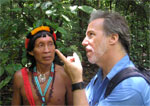 |
Indians are key to rainforest conservation efforts says renowned ethnobotanist
(10/31/2006) Tropical rainforests house hundreds of thousands of species of plants, many of which hold promise for their compounds which can be used to ward off pests and fight human disease. No one understands the secrets of these plants better than indigenous shamans -medicine men and women – who have developed boundless knowledge of this library of flora for curing everything from foot rot to diabetes. But like the forests themselves, the knowledge of these botanical wizards is fast-disappearing due to deforestation and profound cultural transformation among younger generations. The combined loss of this knowledge and these forests irreplaceably impoverishes the world of cultural and biological diversity. Dr. Mark Plotkin, President of the non-profit Amazon Conservation Team, is working to stop this fate by partnering with indigenous people to conserve biodiversity, health, and culture in South American rainforests. Plotkin, a renowned ethnobotanist and accomplished author (Tales of a Shaman’s Apprentice, Medicine Quest) who was named one of Time Magazine’s environmental “Hero for the Planet,” has spent parts of the past 25 years living and working with shamans in Latin America. Through his experiences, Plotkin has concluded that conservation and the well-being of indigenous people are intrinsically linked — in forests inhabited by indigenous populations, you can’t have one without the other. Plotkin believes that existing conservation initiatives would be better-served by having more integration between indigenous populations and other forest preservation efforts.
